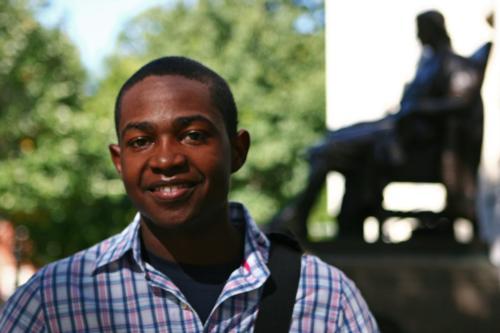
What’s in a Name?
After years of controversy, the Harvard College Women’s Center has finally opened, nestled somewhere in the bowels of Canaday Hall. It’s a quaint facility, really: All students, regardless of gender, can visit the Women’s Center for free coffee and tea (there are multiple varieties of each). An industrious student can even make photocopies and print her papers free of charge. The center is so universally hospitable, in fact, that some might mistake the space for a student center lite.
And that, really, is the problem. Even now that the center has moved from the conceptual to the physical, it finds itself in the midst of an existential crisis. Beyond the old arguments that revolve around two vague words—“space” and “resources,” whatever those mean—nobody seems quite certain of what function this shiny new facility is supposed to serve.
Perhaps it is to draw attention to the oppression that the female portion of Harvard’s student body must face every day. But then again, we’re hard-pressed to think of any hardship facing women on this campus that this Women’s Center can possibly solve. Or maybe, as 300th Anniversary University Professor Laurel Thatcher Ulrich seemed to suggest at the center’s grand opening, it is a sort of reparation that Harvard has paid to compensate for its historical exclusion of women. But on reflection the sheer inanity of that justification seems obvious.
In reality, the Women’s Center, born of Larry Summers’ guilt-trip, really doesn’t seem to have a practical purpose. For all the theoretical grandstanding that has accompanied its inception, its leaders have found little real initiatives to put Harvard’s bounty towards. So instead of funding projects that directly ameliorate the subjugation that the gentler sex must endure on campus, it spends to provide free tea, coffee, printing, and photocopying for everyone on campus, no matter their gender. How sad.
If there’s a detailed and demonstrable case to be made for Harvard women having a space of their own, then the center’s administrators should be unafraid to make this case and refocus the facility’s mission toward its target audience. But if, as we suspect, no such case really exists, then we should dispense with the “Women’s Center” moniker, drop the charade, and dedicate this space to the entire undergraduate community. The center’s staff, we know, is welcoming to all, but the sign at the front door is certainly not.
Andrew M. Trombly ’08, a Crimson associate editorial chair, is a philosophy concentrator in Dunster House. Brian J. Rosenberg ’08, a Crimson associate editorial chair, is a biology concentrator in Lowell House.


